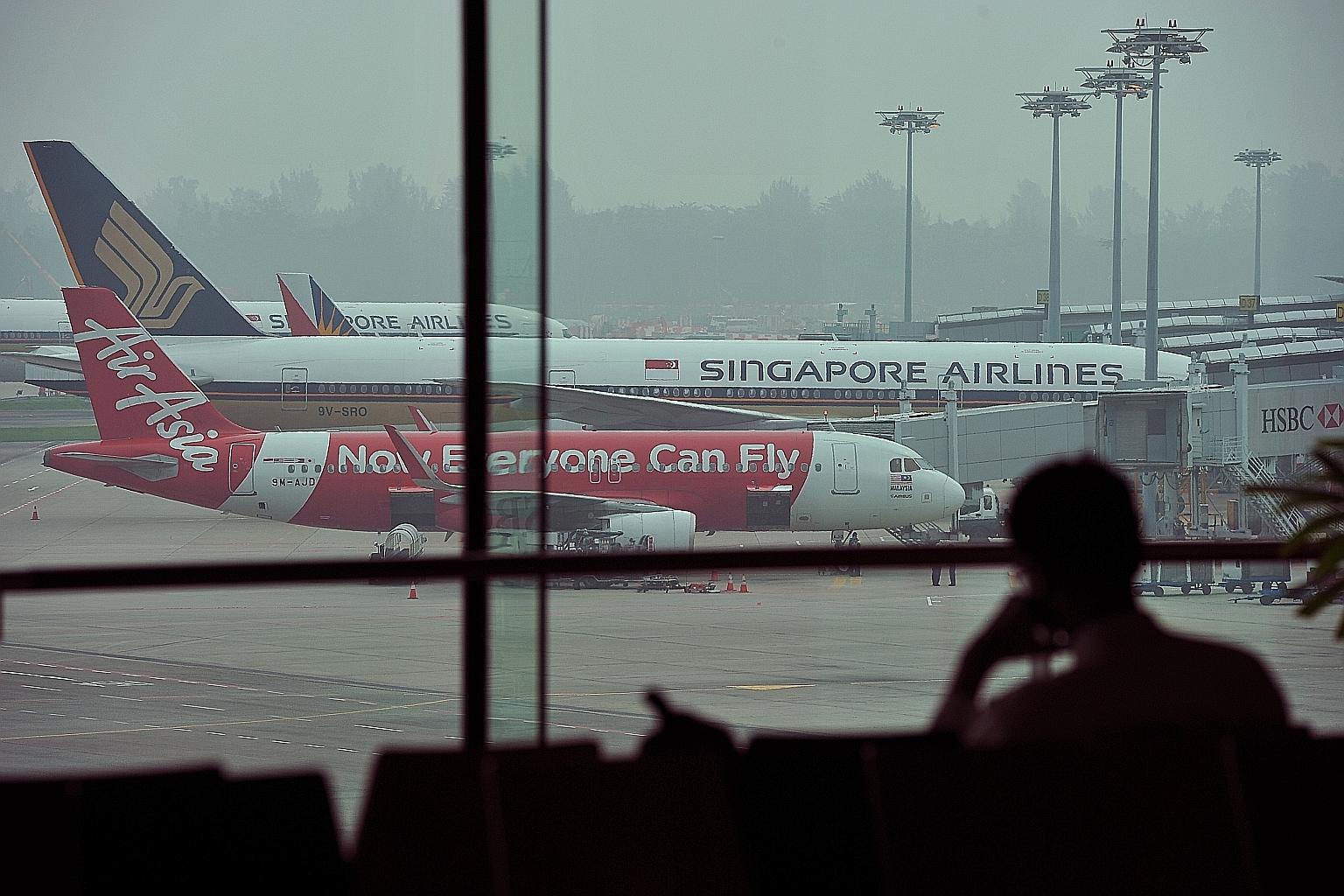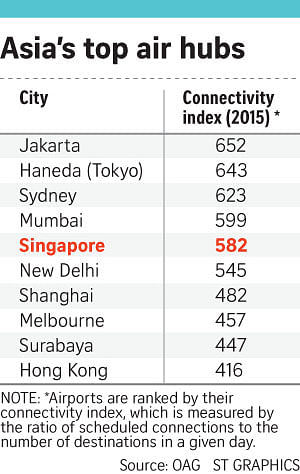Changi Airport among world's fastest growing hubs
Rise of low-cost carriers and greater frequency of flights have also boosted traffic at Asian airports, says expert
Sign up now: Get ST's newsletters delivered to your inbox

As low-cost carriers continue to expand in Asia, airports in the region are expected to further cement their position as "megahubs" in the coming years, said Mr Mark Clarkson of OAG Asia-Pacific.
PHOTO: LIM YAOHUI FOR THE STRAITS TIMES
Karamjit Kaur, Karamjit Kaur Aviation Correspondent
Follow topic:
Singapore's push to be a key transit point for regional and global travellers has put Changi Airport among the world's top 10 fastest-growing air hubs.
Changi took sixth spot, beating key rivals in Hong Kong, Bangkok and Kuala Lumpur. In top spot was Istanbul's Ataturk Airport, while Dubai was fourth.
The ranking by industry consultancy OAG looked at the number of flight connections possible within an eight-hour window on a chosen day this year and compared it with the figure five years ago.
The study, which included domestic and international flights, also ranked the world's most connected airports, which is measured by the ratio of scheduled connections to the number of destinations served by the airport.
Within the Asia-Pacific, Changi was ranked fifth behind airports in Jakarta, Haneda (Tokyo), Sydney and Mumbai.

He said: "It is not just about adding new destinations. It is also about frequency of flights so an airport like Changi that sits in the middle of South-east Asia is in a good position to tap on the growing demand for inter-regional travel which provides many opportunities for flight connections."
With low-cost carriers like Jetstar, Tigerair and AirAsia ramping up capacity again after scaling back in the last few years because of an oversupply of aircraft seats in the market, Changi should continue to do well, industry analysts said.
Changi Airport Group's senior vice-president for market development, Mr Lim Ching Kiat, said there is optimism that things are picking up after a traffic slowdown in the last one to two years.
In August, the airport handled 4.65 million passengers, registering a year-on-year growth of 6.6 per cent; in July, year-on-year growth was 6.8 per cent - the highest in almost two years.
Key markets like China and Indonesia are being tipped to do well.
Changi, which now has links to 28 Chinese cities, expects to increase this to 31 or 32 by year end.
The Singapore-Jakarta route - already Singapore's busiest and the second-busiest overseas route worldwide after Hong Kong-Taipei - also continues to grow.
Last month, Indonesian full-service carrier Batik Air became the 12th carrier to ply the route. It has said it is keen to offer flights between Singapore and other Indonesian cities like Surabaya and Bali.
As low-cost carriers continue to expand in Asia, airports in the region are expected to further cement their position as "megahubs" in the coming years, said Mr Clarkson.
He added: "The importance of well-connected megahubs continues to increase alongside the need for the efficient handling of the increasing aviation traffic... These hubs are critical to global airline efficiency and play an essential role in providing travellers with more options for flight frequencies, available destinations and ticket costs."

